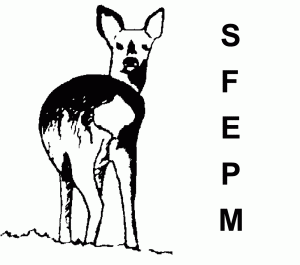 http://www.sfepm.org/
http://www.sfepm.org/
The SFEPM, Société Française pour l’Etude et la Protection des Mammifères (French Society for the Study and Protection of Mammals) (under the law from 1901) was created in 1977 around the project of an Atlas synthesizing the distribution data of mammal species in France .
Today, its members are naturalists with a passion for furthering knowledge on the mammals of the region, and for applying this knowledge to mammal conservation. Mammals, are yet too often the victims of prejudice, (groundless), related to their biology (Carnivores, for example), or classified as pests on criteria that lack objectivity. They also suffer from land management policies that hamper the harmonious cohabitation between our species and other forms of life, in particular “wildlife”.
Yet, from the tiny midge-catching pipistrelle, to the otter, marker of clear waters with abundant fish, from our coasts’ seals, to our mountains’ chamois, from the squirrel to the hedgehog in our gardens, we are surrounded by whole retinues of living creatures. It is our duty to strive, along with SFEPM and its partners, to provide them with an environment that is both adapted to their needs and more enriching for ourselves.
SFEPM has 500 members involved in the study and protection of mammals. The SFEPM, can also count on a network of volunteers, acting in partnership with other associations, government bodies and scientific institutions to advance the knowledge and promote the conservation and popularization of mammals, their diversity and their functions.
A number of initiatives are currently under way (legal status of Carnivores, return of the wolf and lynx, conservation of the bear in the Pyrenees, monitoring of marine mammal, micromammal populations…) and field surveys are undertaken every year in mainland France, in its overseas départements and territories, and elsewhere, in particular with counterparts from other European countries.
SFEPM publishes semiannually, the natural history journal “Arvicola” and the newsletter “Mammifères Sauvages ».
